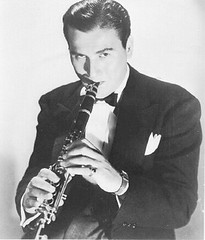Mozart's birthday
Yesterday was Wolfgang Mozart's birthday, born January 27, 1756. His full name was Johannes Christian Wolfgang Gottlieb Mozart.
What, no Amadeus?
Well, yes and no. Gottlieb is German for "loved by God." During a stint in Paris, he jokingly referred to himself as "Amade" (pronounce ahm-a-day), which was later Latinized as Amadeus after his death.
He also had a pet name, "Wolfie," given to him by his wife Constanze.
There's an interesting story about how Mozart came to be a free-lance musician in Vienna. At his father Leopold's insistence, Mozart and his mother went to Paris in order for him to find a position as musician and composer. On the way to Paris, they stopped in Mannheim, where he spent a few months composing and teaching. There he met and fell in love with Aloysia Weber.
Leopold was upset; he insisted that his son quit Mannheim and depart for Paris, which Mozart did, leaving Aloysia behind.
Paris was a disaster. He never really found work, nor was he popular. During the visit his mother fell sick and died. He went broke. His father blamed him for his mother's death, even though it was Leopold who insisted she accompany Mozart to Paris. Leopold secured a job for Mozart in Salzberg as organist and concertmaster for Leopold's employer, the Archbishop Colloredo. Mozart, dejected went home.
But life had another disappointment waiting for Mozart. On his way home, he passed through Mannheim and proposed marriage to Aloysia. She turned him down.
Mozart detested the Archbishop, and felt that his talents were wasted in Salzberg. He managed to get a commision for an opera, Idomeneo, from the elector of Munich. Wolfgang obtained a six week leave-of-absence from Colloredo, and in November of 1780 he left for Munich.
Idomeneo was a big success. Mozart's six weeks of leave came and went, while he made excuses as to why he had to stay in Munich. However, eventually Archbishop Colloredo went to Vienna, and directly ordered Mozart to attend him there. It was the Archbishop's intention to show off his musicians to the aristocracy of Vienna.
While in Vienna, the Archbishop made it very plain who was the servant and who the master. He refused to allow Mozart to perform concerts for his own benefit. Mozart became surly and insubordinate. As tensions mounted between Mozart and his employer, a minister for Colloredo was directed to bring Mozart in line. After a series of confrontations, Mozart tendered his resignation. The minister railed at Mozart, and after taking abuse, Mozart railed back. Eventually Mozart was physically removed, with the minister literally giving Mozart a kick in the butt as he was shoved out the door.
In 1781, at the age twenty-five, Mozart was a free man in Vienna.
In an interesting twist, the Webers had relocated from Mannheim to Vienna. Mozart took an apartment in the Weber home. His former love Aloysia was now married, but Mozart fell in love with one of her younger sisters, Constanze. In 1782, they were married.
What, no Amadeus?
Well, yes and no. Gottlieb is German for "loved by God." During a stint in Paris, he jokingly referred to himself as "Amade" (pronounce ahm-a-day), which was later Latinized as Amadeus after his death.
He also had a pet name, "Wolfie," given to him by his wife Constanze.
There's an interesting story about how Mozart came to be a free-lance musician in Vienna. At his father Leopold's insistence, Mozart and his mother went to Paris in order for him to find a position as musician and composer. On the way to Paris, they stopped in Mannheim, where he spent a few months composing and teaching. There he met and fell in love with Aloysia Weber.
Leopold was upset; he insisted that his son quit Mannheim and depart for Paris, which Mozart did, leaving Aloysia behind.
Paris was a disaster. He never really found work, nor was he popular. During the visit his mother fell sick and died. He went broke. His father blamed him for his mother's death, even though it was Leopold who insisted she accompany Mozart to Paris. Leopold secured a job for Mozart in Salzberg as organist and concertmaster for Leopold's employer, the Archbishop Colloredo. Mozart, dejected went home.
But life had another disappointment waiting for Mozart. On his way home, he passed through Mannheim and proposed marriage to Aloysia. She turned him down.
Mozart detested the Archbishop, and felt that his talents were wasted in Salzberg. He managed to get a commision for an opera, Idomeneo, from the elector of Munich. Wolfgang obtained a six week leave-of-absence from Colloredo, and in November of 1780 he left for Munich.
Idomeneo was a big success. Mozart's six weeks of leave came and went, while he made excuses as to why he had to stay in Munich. However, eventually Archbishop Colloredo went to Vienna, and directly ordered Mozart to attend him there. It was the Archbishop's intention to show off his musicians to the aristocracy of Vienna.
While in Vienna, the Archbishop made it very plain who was the servant and who the master. He refused to allow Mozart to perform concerts for his own benefit. Mozart became surly and insubordinate. As tensions mounted between Mozart and his employer, a minister for Colloredo was directed to bring Mozart in line. After a series of confrontations, Mozart tendered his resignation. The minister railed at Mozart, and after taking abuse, Mozart railed back. Eventually Mozart was physically removed, with the minister literally giving Mozart a kick in the butt as he was shoved out the door.
In 1781, at the age twenty-five, Mozart was a free man in Vienna.
In an interesting twist, the Webers had relocated from Mannheim to Vienna. Mozart took an apartment in the Weber home. His former love Aloysia was now married, but Mozart fell in love with one of her younger sisters, Constanze. In 1782, they were married.


